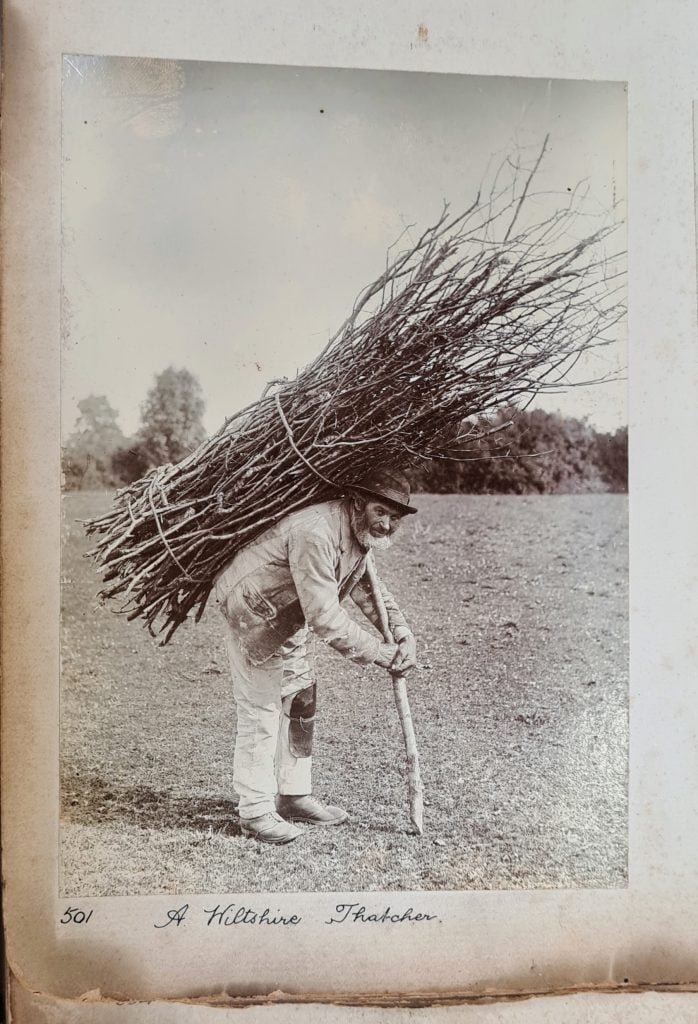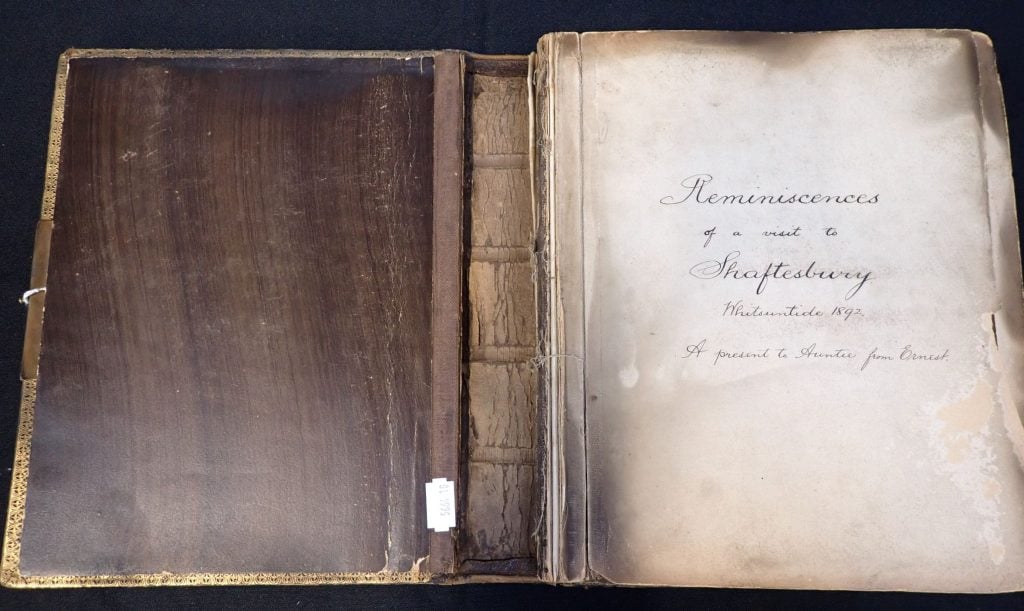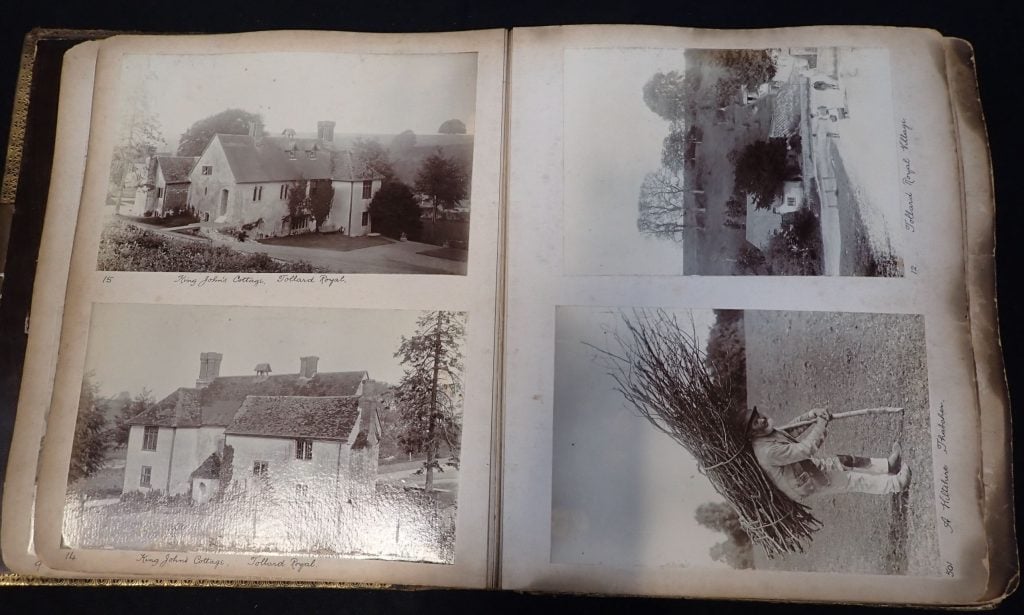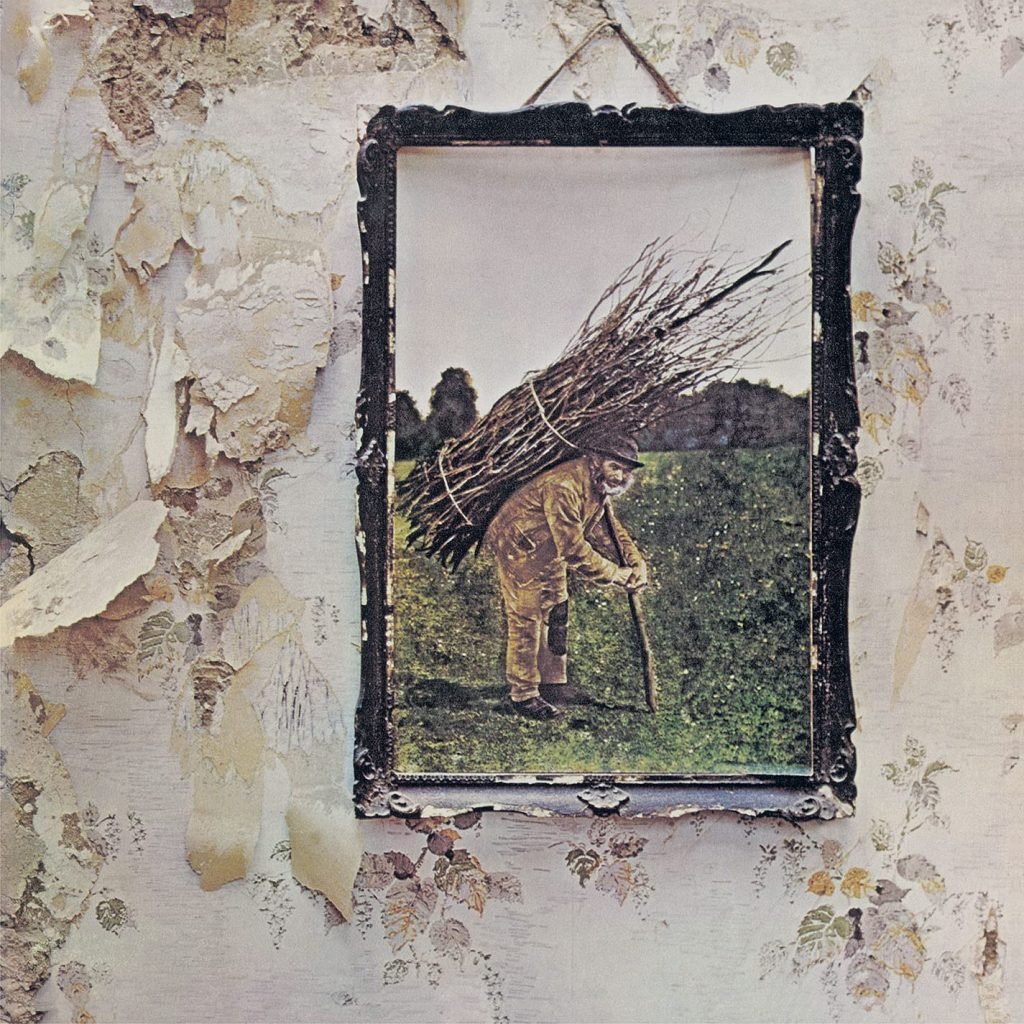Pop Culture
A U.K. Researcher Has Unearthed the Original 19th-Century Photo Featured on an Iconic Led Zeppelin Album Cover
The image was found in an album of photographs taken by Ernest Howard Farmer.

The image was found in an album of photographs taken by Ernest Howard Farmer.

Min Chen

The cover of Led Zeppelin’s celebrated 1971 record depicts an elderly man, his back laden with a bundle of sticks. It is an image that is as evocative as it is enigmatic. Word is that the band’s Robert Plant and Jimmy Page found the photograph in an antique shop in Reading, England. But now, a researcher in Wiltshire has uncovered the original source of the image, in the pages of a late Victorian photograph album.
Brian Edwards, a visiting fellow at the University of the West of England, was conducting research for the Wiltshire Museum’s 2021 exhibition, “Ways of Seeing Wiltshire,” when he came across an album dated to 1892. Titled Reminiscences of a Visit to Shaftesbury, it contains images of black-and-white photographs of Wiltshire, Dorset, and Somerset, including architectural views, street scenes, and portraits of rural workers.

Ernest Howard Farmer, Reminiscences of a Visit to Shaftesbury (1892). Photo courtesy of the Wiltshire Museum.
One photograph stood out to Edwards—that of a bearded and bent figure hauling sticks—underneath which is handwritten “A Wiltshire Thatcher”. As a long-time Led Zeppelin fan, Edwards immediately linked the picture to the one on the cover of Led Zeppelin IV.
“I instantly recognized the man with the sticks. He’s often called the stick man,” Edwards told BBC Wiltshire. “It was quite a revelation.”
Handwriting research into the album has surfaced the photographer behind the images: Ernest Howard Farmer. He was the first head of the School of Photography at the Polytechnic Regent Street, which now forms part of the University of Westminster. His book of Reminiscences is inscribed, “A present to Auntie from Ernest.”
The man Farmer photographed has also been identified as Lot Long (1823–93), who was a widower residing in a small cottage in Shaftesbury Road, Mere, when the image was taken.

The inside pages of Ernest Howard Farmer’s album, including the photograph titled A Wiltshire Thatcher. Photo courtesy of the Wiltshire Museum.
For the sleeve of Led Zeppelin IV, Farmer’s image was hand-colored and framed against a wall of peeling papers. The record, which contains Led Zeppelin’s most beloved hit “Stairway to Heaven”, is one of the group’s many bestselling releases and was immortalized on a Royal Mail postage stamp in 2010. However, the whereabouts of the photograph that Plant and Page based their album cover on remains unknown.
“Led Zeppelin created the soundtrack that has accompanied me since my teenage years,” said Edwards in a statement, “so I really hope the discovery of this Victorian photograph pleases and entertains [band members] Robert, Jimmy, and John Paul.”

The cover of Led Zeppelin IV (1971). Photo courtesy of Atlantic Records.
The Wiltshire Museum has acquired Reminiscences and plans to include its images in an upcoming exhibition on Farmer, titled “The Wiltshire Thatcher: A Photographic Journey through Victorian Wessex.” The museum bills Farmer as a photographer who, though little-known today, “was a leading figure in the development of photography as an art form.”
“We will show how Farmer captured the spirit of people, villages and landscapes of Wiltshire and Dorset that were so much of a contrast to his life in London,” David Dawson, the museum’s director, told BBC Wiltshire. “It is fascinating to see how this theme of rural and urban contrasts was developed by Led Zeppelin and became the focus for this iconic album cover 70 years later.”
More Trending Stories:
Revealed: The Major Mystery Consignors of New York’s Multi-Billion-Dollar Fall Auction Season
Christie’s Pulled Two Works by a Prominent Middle Eastern Artist From Sale After a Complaint